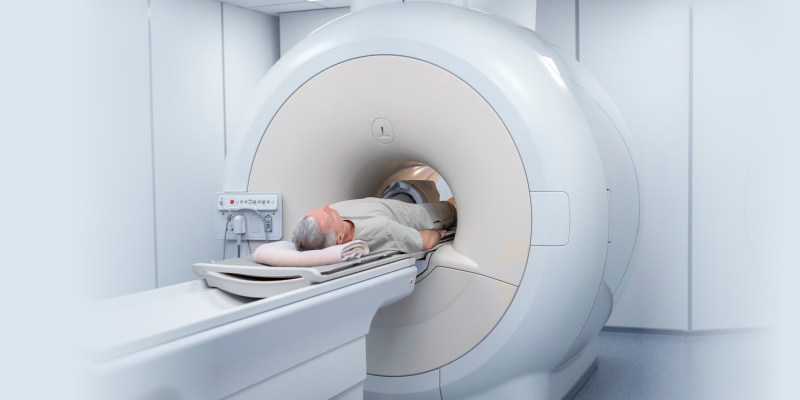

Teleradiology
How to Increase the Efficiency of the Radiology Equipment
Radiology Equipment
Background
Over the past few decades, the role of radiology in patient care has grown substantially globally driven by factors such as the increased prevalence of chronic ailments, the ageing population, awareness of evidence-based patient management, significant improvement in medical technology, etc. At present, the radiology department is the heart of any healthcare setting, enabling physicians to save lives by not only establishing an accurate and prompt diagnosis but also aiding image-guided complex surgical procedures for better outcomes and monitoring treatment-related outcomes.
The equipment used in the radiology department includes X-rays, CT scans, MRI, ultrasound, fluoroscopy, mammography, PET scan, nuclear medicine, etc. Most of these have sophisticated features, require delicate handling and have a high maintenance cost. In most healthcare settings, as the volume of patients utilizing radiology service is very high, achieving high levels of productivity and efficiency is of paramount importance in the radiology department.
Strategies for increasing the efficacy of the equipment
Medical imaging equipment impacts patient care significantly. It leads to faster and more accurate diagnosis, lower rescan rates, lower radiation exposure and a good patient experience. This in turn paves the way for increased demand. Some of the key strategies for increasing the efficacy of medical imaging equipment are discussed below.
Regular maintenance
Regular maintenance of medical equipment ensures that it functions efficiently to enable appropriate patient management. Maintenance aims to ensure that the equipment functions as per the performance characteristics set by the hospital, the manufacturer's specification and the clinical requirements. Maintenance should be taken up proactively periodically on a preventive basis rather than after a breakdown. Regular maintenance is usually done by authorized personnel employed by the hospital, in most cases being the technician handling the equipment, service personnel or engineers with specialist expertise provided by the equipment manufacturer.
Staff training & collaboration
Proper staff training on equipment handling and department protocols is an important step in increasing efficacy. Both new team members and existing members should ideally be periodically trained and updated about a few features by highly-experienced application consultants from the equipment manufacturers or key operators, who have hands-on experience using the equipment. Radiographers often have to work in highly pressurized work environments such as operating rooms, emergency departments, night shifts, etc. Thus, fostering a culture of feedback and collaboration among the radiology team reduced the chances of technical or human error. Radiologist technicians and nurses should be also adequately trained to prepare and position patients for imaging, administer medicines, follow radiation safety protocols, counsel and comfort patients during procedures and independently perform procedures.
Workflow optimization
Workflow optimization is the use of strategies to increase the efficiency in the radiology department to reduce costs, time and errors. Analyzing the patient flow, scheduling appointments, and operational processes to identify and remove bottlenecks and inefficiencies are some of the important strategies to achieve workflow optimization in the radiology department. Several software systems available nowadays can reduce waiting times and the number of patient no-shows, allocate resources, address the increased volume of examinations, foster clinical collaboration with integrated patient data, etc. This reduces operational costs and also the time of the busy radiology team.
Technology upgradation
The advent of newer technologies, powered by artificial intelligence and machine learning has significantly reduced the workloads of overburdened radiologists, optimal use of equipment and also improve diagnostic quality and medical treatment. For example, a picture and communication system (PACS) allows for efficient storage, retrieval, and sharing of digital images and reports throughout the clinic in all departments. This allows for making informed decisions and collaboration among the treating team. Similarly, computer-aided design (CAD) software systems can assist radiologists in detecting abnormalities or potential problem areas by accurate image interpretation using the equipment. This improves accuracy and reduces interpretation time. Data analytics tools can be used to analyze and evaluate equipment performance, patient throughput, and overall efficiency.
FAQs
X-ray is one of the most commonly ordered investigations by physicians. Adequate staff training in carrying out the X-ray procedure accurately is of paramount importance to improve workflow. Several AI applications are available nowadays that improve efficacy and provide more consistent outcomes while using the X-ray. For example, applications are available for accurate positioning, technique and collimation which improve image quality. Standardizing X-ray equipment and its periodic maintenance also increases its productivity and ease of use.
The adoption of AI tools can help to reduce the work burden of busy radiologists with improved efficacy, minimizing the chances of error. The number of qualified radiologists in India is very limited and many of them work 10–12-hour shifts, analyzing hundreds of scans a day. AI algorithms can better detect abnormalities, and generate faster and more accurate images thereby enabling quicker and precise patient treatment.
Ultrasound examination is one of the most common diagnostic imaging procedures. The use of portable ultrasound units, training more sonographers, delegating wisely according to case complexity, scheduling appointments, etc are some of the important strategies to maximize ultrasound usage in the radiology department. Ways to improve ultrasound image quality include using the right pre-sets, checking the depth, using the right frequency, adjusting the gain, using time-gain compensation and increasing the focus.
Quality assurance implies monitoring, evaluation and maintenance of radiology equipment for optimal performance. Initiating corrective action is an integral part of quality assurance. Radiologic technologists should document and maintain records of quality control following local regulations, hospital policies and manufacturer guidelines. Any significant increase or change in radiation exposure should be promptly recorded and reported.
Some of the important things to keep in mind for the optimal working of radiology equipment include performing regular preventive maintenance, operating equipment within technical specifications, adequate staff training, maintaining an optimal environment and temperature for all equipment and following manufacturer guidelines for cleaning equipment exterior and components.
More from AMI
Sports-Related Injuries and the Importance of Radiology
30/01/2023
Emerging Techniques in Radiology By Dr. Namita
10/11/2022
The Future of MRI: Advancements and AI Integration in Online MRI Reporting
19/05/2025
Revolutionizing Indian Healthcare: Unlocking the Potential of Teleradiology in Remote Areas
27/09/2023
Empowering Radiologists-Teleradiology Redefines the Role of Imaging Specialist
09/10/2023
Radiology Practices
30/11/2022
Teleradiology's Contribution to Timely Emergency Diagnoses
04/10/2023
10 Strategies To Prevent Burnout In Radiology
09/01/2023
Scope of Radiologist in India
29/08/2023
Imaging Instrumentation Trends In Clinical Oncology
26/06/2023
Intra- Operative 3D Imaging With O- Arm Making Complex Spine Surgeries Safe and Accurate
30/11/2022
Behind The Scenes of Teleradiology: How Digital Imaging Is Changing Diagnostic Medicine
16/10/2023
Advances In Neuroradiology
06/01/2023
Improvement of Patient Care Through Teleradiology
03/07/2023
Emerging Trends and Technologies in Medical Imaging
19/06/2023
How to Choose a Prospective Teleradiology Service Provider
07/08/2023
Imaging In Pregnancy
18/01/2023
What is Diagnostic Radiology? Understanding its Tests and Procedures
14/08/2023

AMI Expertise - When You Need It, Where You Need It.
Partner With Us
